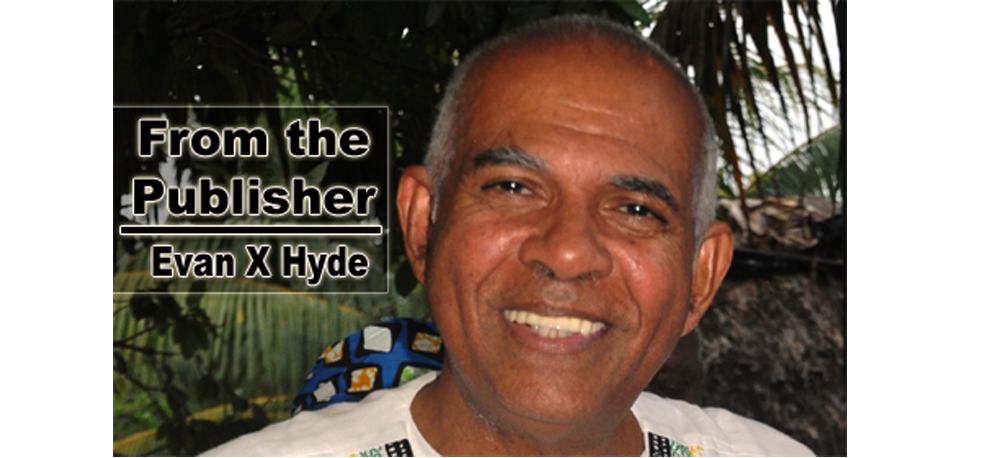As late as 1988, when Franklin Patterson wrote his very important paper on the history of the Guatemalan military academy, the population of Guatemala was 54 percent Maya, and oppressed.
Although the Hon. Florencio Marin, Sr., Minister of Natural Resources from 1965 to 1984 under Rt. Hon. George Cadle Price, was very friendly with my late uncle, James V. Hyde, who was Lands Commissioner for many years under Mr. Marin’s leadership, Hon. Florencio and I were distant from each other until six or so years ago.
Mr. Florencio said he was just 22 when he was first elected area representative for Corozal South in 1965, and was given the Natural Resources portfolio.
In the first general election held in British Honduras under a new Ministerial constitution in 1961, Jesus Ken had been elected area representative for Corozal South with an 85 percent majority. He was very, very popular with cane farmers, and he was a militant, so militant that it appears that Mr. Price felt that he had to replace him in order to keep the peace with the British, who controlled the transnational Tate & Lyle and were looking to make a major investment in the Tower Hill sugar factory in Orange Walk Town. (Previously, there had only been a Pembroke Hall sugar factory in Corozal.)
It is an indication of how powerful Mr. Price was in 1964 that he was able to replace the very popular Hon. Ken with the young Florencio, who was a humble schoolteacher at Copper Bank at the time. I believe the late Ray Lightburn played a major role in influencing the candidate convention in Florencio’s favor.
It is fairly certain that Mr. Ken is a descendant of a leading family amongst the Santa Cruz Maya in southeastern Yucatan, and I believe Mr. Marin also has Maya ancestry, although he carries a Hispanic surname.
It is not clear to me when it was exactly that Mr. Price began a campaign on the government-controlled radio station wherein he discussed and emphasized Belize’s Maya past in order to legitimize, so to speak, Belize’s drive for self-rule in the form of self-government, which was achieved in January of 1964, and political independence.
The thing is that no one knew much about the details of Maya history in the region, because the Maya hieroglyphics (code) were not “broken” until 1973. And Nelson Reed did not publish his historic work on Yucatan’s Caste War (1847-1903) until 1963. There were a couple writings about the Caste War, but these were written in Spanish.
A few years ago, after Mr. Florencio and I became more cordial, I asked him about Mr. Price’s Mayanization campaign. He said that he believed that Mr. Price had sent the late Rudy Castillo to Merida to do research. This would have been in the early/middle 1960s, because it was happening before I went abroad to school in 1965.
There was a backlash to Mr. Price’s Mayanization campaign amongst black youth in Belize City. These youth were not black conscious. Belize was very isolated regionally and internationally at the time. We knew absolutely nothing about the Haitian Revolution in 1791, apartheid in South Africa, and the imprisonment of the iconic Nelson Mandela in 1963. But we knew that we were not Maya, and it is for this reason that UBAD became so popular in 1969.
Since Nelson Reed first published his Caste War treatise in 1963, there has been an explosion in studies having to do with the Yucatan amongst the academics in American universities.
Perhaps the leading researcher and publisher in the sociology and history of the Yucatan, especially insofar as Yucatecans of African and Maya descent are concerned, is Professor Matthew Restall of Penn State University. One of my friends in the United States (he’s actually a regular columnist in this newspaper) told me last week that he had actually met Matthew Restall recently.
I was excited, and began thinking about the possibilities insofar as some academic institution here perhaps organizing a visit to Belize by Professor Restall. Our young Belizean students know next to nothing about the real history of Belize, located as it is between Guatemala’s Peten and Mexico’s Yucatan.
There was a divisive ethnicity game played by the British here during their colonial rule. The Garifuna were excluded from the civil service, and ended up being recruited by the Roman Catholic Church to teach in the rural areas of Belize. It seemed the people of Mestizo/Maya descent were also excluded from government service, but the discrimination against the Garifuna was more blatant, because the Garifuna had been here from the early nineteenth century, whereas the Mestizo and the Maya did not begin drifting in from the north until the latter part of the nineteenth century.
Creole leadership in Belize never acknowledged the reality of the discrimination being practised by the colonial British. They focused on condemning Mr. Price for “Latinization,” and they basically migrated to the United States.
The institutions of higher learning in Belize do not want to examine our British colonial past. If they did, they would have to admit that there was discrimination here which favored the clerical Creoles.

